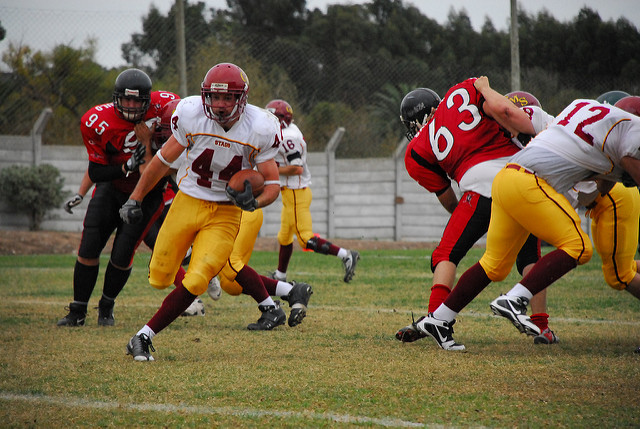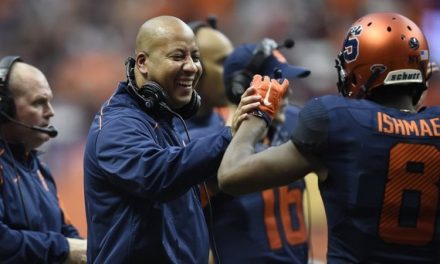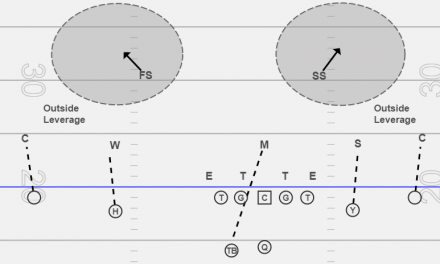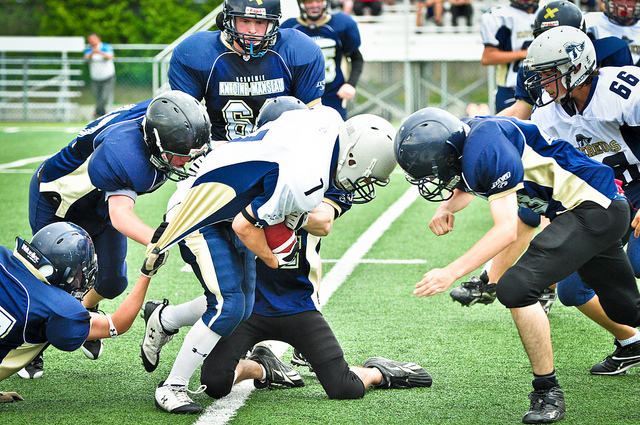Here’s some of my top strategies to making your offense better right now. With all the rush of getting things started and managing a team, sometimes it helps to run through a brief checklist of the basics. If I missed any you can think of comment below to add to the list.
- Part to whole. In every team that you work with, you can’t skip steps. This is a huge coaching point Urban Meyer talks a lot about. First you have to develop individual skills, then put the skills together to work on timing and relationship and then finally take all the positions together and work it as a team. If you miss a step you will have a break down. When those breakdowns occur, you have to go back to the missing step and fix it. Sometimes it’s minor, sometimes it’s major. If you push on and don’t go back, expect even more things to break.
- Installation sequence of every play: work on what they need by position first, then in a group where they can put it together. Ex. Slant route, to slant route with QB’s to 7 on 7 Double Slants to Full Team Slant routes on Goal Line or wherever. This is the same strategy outlined in #1. I’ve seen too many teams get to team time when they didn’t practice or install the elements of the plays they are running earlier.
- Teach plays that can adapt to anything and everything – leave no stone un-turned. The more you have to change plays or teach audibles, the harder your offense gets and therefore the fewer plays you should have. Some offenses are built on this – having lots of checks – but it is built into each play. The easiest plays to call and run are the ones that get run no matter what the defense shows and the players know how to adjust to make them work. My best example of this is the Power Run. DE slants inside, FB seals him in and RB bounces outside. Or the whole Inside/Outside zone scheme.
- Get the ball to the athletes. Period.
- Where you place athletes in blocking positions matters. I’ve done crazy things and they rarely fail. The more you do crazy things…like have a guy play G for Power, but T for Iso, then backside on Toss, the harder time defenses will have to figure it out. I want defenses guessing anyway because then they aren’t reacting. Sometimes you don’t have to do this stuff because you have enough depth, but why wouldn’t you want to do it a little if your best is really the best?
- Use personnel/formation and tempo to gain advantages. Use one or all three at once. Build it into your system so you don’t have to remember to keep changing it – like snap count for plays. Some formations and plays just have much better angles and attack defenses better then others depending on the defense. Find them.
- Can they run it in their sleep? Fewer plays. Mastery of plays. Then add complexity.
- Play with splits. Again, you make it really difficult on the defense if they can’t count on you lining up exactly the same every time.
- 5 min rule to keep or trash a play for that practice/week/game. I love this because it keeps you from making huge mistakes trying to perfect something. Usually you will figure out the problem later that day but it’s much harder on the spot. OR you skipped a step in installing it and need to spend time going back.
- Coaches stop rambling on…Team time is not the time for life lessons – make a note, move on. Only the head coach stops the flow…not assistants – have them sub in to talk to someone but talking to a player cannot stop everything. Make goals for short segments like 10 plays in 5 minutes or less if you huddle. Key: make practice harder then a game…then the games seem easy! Not by being crazy or angry, just by challenging them.
- Team Time Progression…(Never walk through run plays on air) Walk through a play to defenders/or cones (or whatever) standing – coach calls out play and team runs it walking to assignment. Often no ball should be used. Run plays against the base front first, then vary fronts. Run through to bags is second step. Then the tempo picks up with rapid fire plays. Next is thud tempo without the bags – but every body stays up. Finally- Live. Keep live periods short though and scripted because you want them always feeling fast when they go live.
- Send them back to individual – if a group can’t execute in team, no point in staying in team…go back a step in the process…
- Have Fun! Random note here, but don’t get too focused on the process to have some fun. Keep rotating those guys in. It’s no fun standing around all practice.
- Use strategies to get kids going…challenge them with timing plays, remembering sequences, doing competitions, even making up plays on the spot. Whenever you see a lull, try to spice it up.
- Film everything…practice film helps you see things – I recommend Go Pro on selfie stick behind the offense. Or the best option I’d love to try…drone!
So go ahead and try these and report back to let me know how it went? Which one do you need to work on the most right now? Comment below.





